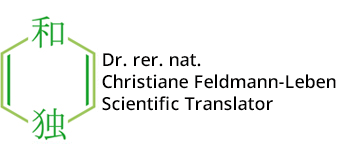My Topic of the Month – Sodium Ion Batteries (SIB)
These days, almost every child knows about lithium ion batteries (LIB). Many modern technologies that we are so dependent on today – smartphones, notebooks, etc. – would be unthinkable without these batteries. And they are thought to be indispensable for electro-powered mobility in the future. A vision that I do not share, but that is another issue…
Lithium has the lowest density among metals under standard conditions; thus, it is very light. Additionally, its ions are small, and it has an extremely negative redox potential, or in other words, it is extremely base. The latter enables high cell voltages of approximately 3 V (cf. nickel accumulators with a voltage of 1.2 to 1.5 V). The first results in high energy densities, i.e. a lot of energy per unit weight (Li-ion: 120-210 Wh/kg, Ni-batteries: 40-110 Wh/kg). These are the characteristics that enabled the realization of the small and durable batteries for smartphones and notebooks. Unfortunately, the base behavior also causes some problems, because lithium is extremely reactive, as some spectacular fires of electric cars of an American manufacturer demonstrate. Moreover, it does not occur in infinite quantities (it is less common than, e. g., copper, but more abundant than, e. g., lead), and its production is rather expensive.
Exchanging Lithium with Sodium
Should the development of electromobility develop as envisioned by ignorant dreamers, bottlenecks in the supply of lithium are possible. Therefore, more abundant and cheaper metals would be attractive. One metal being discussed as a substitute is sodium. This metal is chemically quite similar to lithium, but its ions are slightly larger, which increases problems associated with volume changes of the battery components in the course of charging and discharging. In addition, it is of course also heavier, which has a negative effect on the energy density. On the other hand, it occurs much more frequently than lithium (e. g. in the form of table salt) and is therefore cheaper to have. A review in Angewandte Chemie now addresses the chemical / physical / technical implications of replacing lithium with sodium. It has been shown that the battery chemistry often becomes more complex and some require solutions for well-resolved problems of lithium-ion batteries, but sodium ion batteries do not per se perform worse. SIB probably will not provide solutions for vehicle technology, but possibly for stationary energy storage, e. g. in connection with photovoltaics or wind turbines, where the weight of the battery is irrelevant. But even though research on SIB has achieved great progress in recent years, it is still in its infancy and a technical realization will take time.
Said paper, whose translation into Geman was done by me, by the way, can be found at:
German: http://onlinelibrary.wiley.com/doi/10.1002/ange.201703772/abstract
English: http://onlinelibrary.wiley.com/doi/10.1002/anie.201703772/abstract
